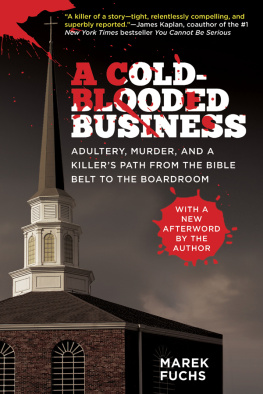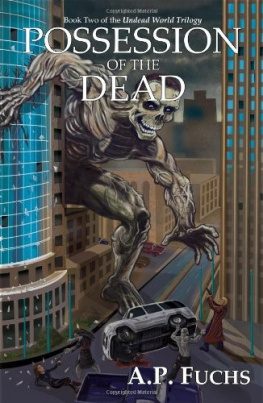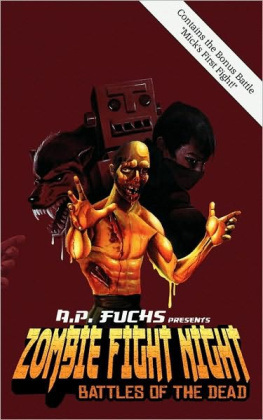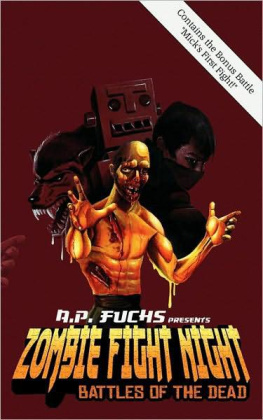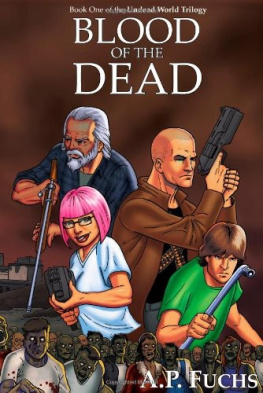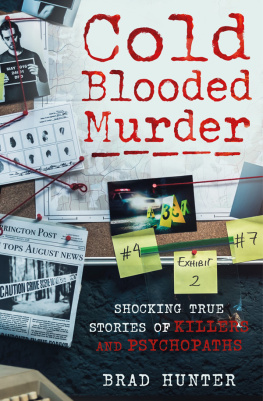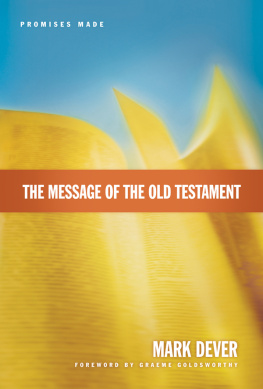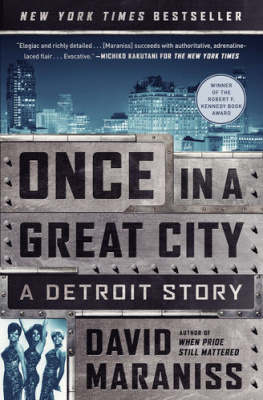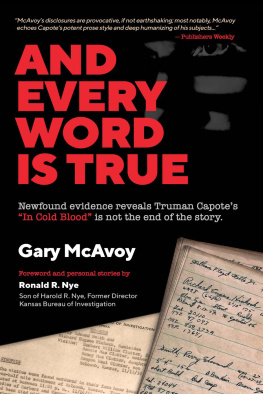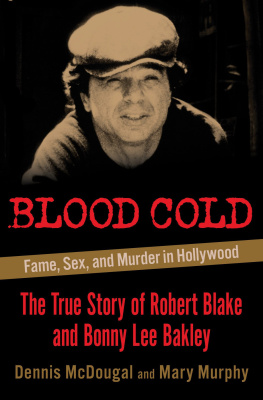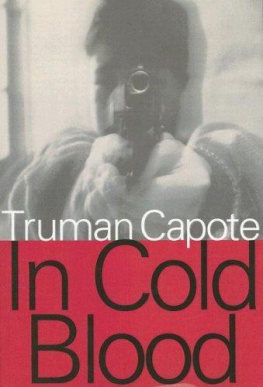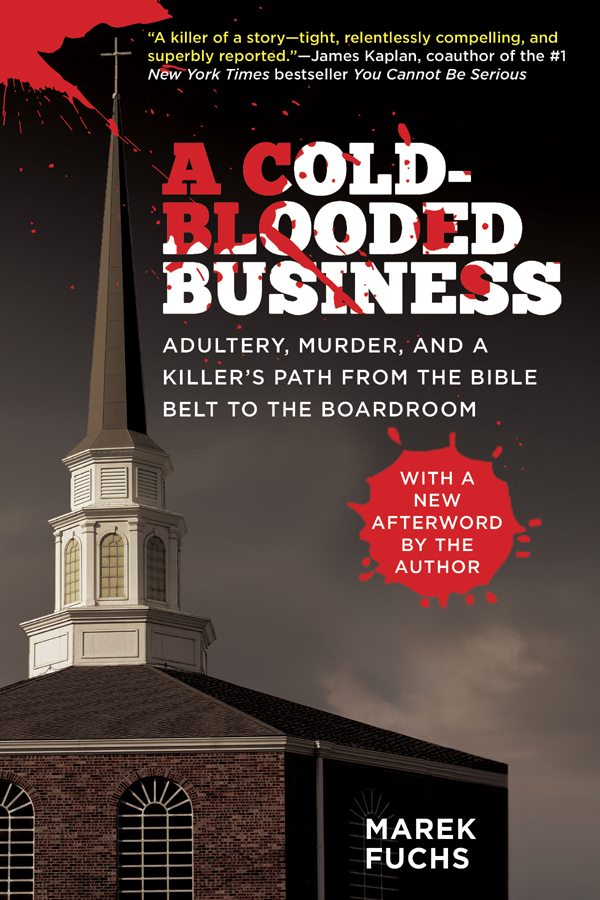

Copyright 2009, 2014 Marek Fuchs
Afterword copyright 2014 by Marek Fuchs
Scripture taken from the Holy Bible, New International Version, NIV, Copyright 1973, 1978, 1984 by International Bible Society. Used by permission of Zondervan. All rights reserved.
All Rights Reserved. No part of this book may be reproduced in any manner without the express written consent of the publisher, except in the case of brief excerpts in critical reviews or articles. All inquiries should be addressed to Skyhorse Publishing, 307 West 36th Street, 11th Floor, New York, NY 10018.
Skyhorse Publishing books may be purchased in bulk at special discounts for sales promotion, corporate gifts, fund-raising, or educational purposes. Special editions can also be created to specifications. For details, contact the Special Sales Department, Skyhorse Publishing, 307 West 36th Street, 11th Floor, New York, NY 10018 or info@skyhorsepublishing.com.
Skyhorse and Skyhorse Publishing are registered trademarks of Skyhorse Publishing, Inc., a Delaware corporation.
Visit our website at www.skyhorsepublishing.com.
10 9 8 7 6 5 4 3 2 1
Paperback ISBN: 978-1-62636-116-4
eISBN: 978-1-62873-866-7
The Library of Congress has catalogued the hardcover edition as follows:
Fuchs, Marek, 1967
A cold-blooded business: Adultery, Murder, and a Killers Path from the Bible Belt to the Boardroom / Marek Fuchs.
p. cm.
ISBN 978-1-60239-254-0 (alk. paper)
1. Murder--Kansas--Olathe. 2. Harmon, David, d. 1982. 3. Raisch, Melinda.
4. Mangelsdorf, Mark. I. Title.
HV6534.O42F83 2008
364.1523092--dc22
2008013285
Printed in the United States of America
For Lori, Lyra, Emmett, and Oliver, who put up with way too much, and with grace and warmth give back laughs and more than I could ever dream of in exchange.
And God is faithful; he will not let you be tempted beyond what you can bear. But when you are tempted, he will also provide a way out so that you can stand up under it.
1 Corinthians 10:13
F OREWORD
S he asked me if I had seen the article; I had. While drinking our respective morning coffees, my editor at the New York Times and I had both happened upon a small mention in a local paper. It wasnt much, several hundred words of simple facts, and not too many at that. A man who lived on a choice street in Pelham, New Yorkan upscale suburb of New York Cityhad just been implicated in an old Kansas murder. With the help of a female accomplice, he was thought to have killed a sleeping man. Quite brutally, it seemed.
On any ordinary day, there might be legal and ethical lapses among the well-heeled residents of Pelham, but little in the way of murder, much less wholesale slaughter. This was intriguing. Had a murderer, undetected for two decades, lived in close quarters with CEOs, investment bankers, and venture capitalists? Was he one of them? One of those people with an innate and expedient ability to succeed in our world? Probably. The article mentioned that the accuseds attorney was Michael Mickey Sherman, who had represented Kennedy family member Michael Skakel in that cold murder case. Sherman had clout and did not come cheap.
Lifes path is always fraught with lurches and surprise, but this journey from Kansas to Pelham and the height of New York respectability seemed like an especially crooked line. And then there was the name of the town back in Kansas: Olathe. I wasnt even sure how to pronounce it, but for some odd reason, it looked familiar. A trip to my bookshelf told me why. Truman Capotes In Cold Blood had profiled the pair of murderers whod used Olathe as their base, departing from the small east Kansas town to kill the Clutter family and returning there later that same blood-soaked, wakeful night. This murder, though, was already different. In In Cold Blood , the pair of murderers had stumbled from crime to crime and were caught a month and a half after the murder, eventually executed together. No such tidy, frontier moral play here. This Pelham man and his female cohort, who were originally suspects but somehow went free, had gone their separate ways and apparently had been living accomplished lives in the two decades since their own particular blood-soaked, wakeful night. Were they weighed down by remorse? Or were they able to put a tight lid on the guilt? Perhaps they were totally innocent, wrongfully accused. Even the authorities must have some doubts. The woman had been indicted for murder, but the man was only named as a coconspirator, as yet not formally charged. Why not adhere to the more common practice of formally indicting both suspects?
There seemed to be far more questions than answers.
My editorthe incomparable Jeanne Pindergave me the go-ahead. Without further delay, I was off to Kansas.
P ROLOGUE
G od has failed too many on this one, thought Detective Bill Wall as he ambled, soaking wet, toward the large home with the brick faade. It was warm for an Ohio December, and the temperature meant that rain, not snow, fell from the slate-gray skyand that was no advantage. In a bit of poor planning, Wall and his companion, Detective Steve James, had forgotten their umbrellas. Their footsteps splashed against the steps of the house belonging to Melinda Raisch, formerly known as Melinda Harmon.
They were there to investigate the unsolved murder of Melindas first husband, David Harmon. For almost twenty years, the case had been famously unsolved in their home state of Kansas, but Wall had a hunch this case could be wrapped up with just a turn of that front doorknob.
The players in the crime were memorialized in the depths of the collective unconscious back in Olathe: a pretty newlywed, Melinda Lambert, the one all the boys desired for her pert, all-American looks and her bright, eager eyes; a young, handsome college student, Mark Mangelsdorf, student body president and one of the most popular guys on campus; and David Harmon, Melindas adoring, twenty-five-year-old husband, who one dark winter evening in 1982 was bludgeoned to death in his own bed. It was a slaying so gruesome that the first responders on the scene thought the victim had been shot in the face point blank with a shotgun.
A dozen blows had fallen on Davids sleeping face, when probably three would have served to kill. His face had been rendered featureless. One eyeball was dislodged and had rolled onto the floor. His nose and cheekbones were utterly destroyed. His jaw was cracked in several places, and the killer had been in such a fervid state that he had, in his haste, delivered an errant shot to Davids neck, crushing it. Pieces of Davids brain had sprayed about the bedroom.
Davids wife Melinda and her friend Mark Mangelsdorf were the prime suspects. The brutal murder sparked dissent and division within the town: between the relatively newly arrived Church of the Nazarene, an evangelical Christian denomination of which Melinda, David, and Mark were members, and the long-established Olathe residents. Because of the churchs unusual actions after the murder, many thought it was protecting its flock, even at the risk of harboring criminals. Some thought the entire case against Mark and Melinda was character assassination and that the unsubstantiated rumors of a Nazarene divorce stemmed from fear of the towns growing population of evangelicals.
Evangelicals stood in animus against farm families and their more measured attachment to Jesus. Neighbor set upon neighbor, with the naturally deferential manners of the Midwest all but lost, as if to prairie fire.
Next page
